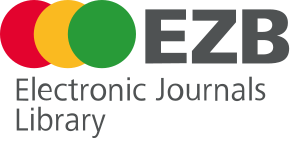Transitions theory as a framework for rehabilitation nursing for people with tracheostomy during ventilatory weaning in intensive care
DOI:
https://doi.org/10.56294/shp2025405Keywords:
Rehabilitation Nursing, Nursing Theory, Intensive Care Units, Ventilator Weaning, TracheostomyAbstract
Introduction: Ventilatory weaning involves moving from invasive mechanical ventilation to spontaneous ventilation. In people with tracheostomies, this process causes physical vulnerabilities (reduced respiratory function, risk of infections), psychological vulnerabilities (anxiety due to the inability to vocalize) and social vulnerabilities (isolation in the ICU, interruption of roles).
Objective: To analyze the role of rehabilitation nursing care in promoting ventilatory weaning in tracheostomized individuals, through the lens of Meleis’ Transitions Theory.
Methods: Theoretical review based on Meleis' Transitions Theory and recent studies, integrating evidence on the vulnerability of the person with a tracheostomy, in the process of weaning, respiratory rehabilitation strategies, mobilization, emotional support and health education.
Results: The Transitions Theory guides the rehabilitation nurse towards a personalized assessment of the physical, cognitive, social and cultural conditions of the person with a tracheostomy; education adapted to the level of literacy, with respiratory exercise training; early mobilization and functional training to reduce atrophy and strengthen respiratory muscles; psychosocial and family support, promoting adequate communication, the presence of family members and coping strategies; monitoring of transition indicators, allowing dynamic adjustments to the rehabilitation nursing care plan.
Conclusions: The application of the Transitions Theory enables rehabilitation nurses to plan and implement interventions centered on the person with a tracheostomy and their family, valuing vulnerability as an expression of quality of life. By monitoring process and outcome indicators, nurses anticipate barriers, strengthen trust and promote coping strategies, helping to make ventilator weaning a healthy and transformative transition.
References
1. Esteban A, Anzueto A, Frutos F, Alía I, Brochard L, Stewart TE, Benito S, Epstein SK, Apezteguía C, Nightingale P, Arroliga AC, Tobin MJ; Mechanical Ventilation International Study Group. Characteristics and outcomes in adult patients receiving mechanical ventilation: a 28-day international study. J Am Med Assoc. 2002;287(3):345-355. https://doi.org/10.1001/jama.287.3.345
2. Mendes F, Ranea P, Oliveira A. Protocolo de desmame e decanulação de traqueostomia. Rev Cent Universitário Lusíada Ensino Pesq. 2013;10(20):5-12. http://revista.lusiada.br/index.php/ruep/article/viewFile/100/u2013v10n20e69
3. Goldwasser R, Farias A, Freitas EE, Saddy F, Amado V, Okamoto VN. Desmame e interrupção da ventilação mecânica. Rev Bras Ter Intensiva. 2007;19(3):384-392. https://www.scielo.br/j/rbti/a/MRz6q4svQnH7XQSDN7V8Fnz/?format=pdf&lang=pt
4. Fadila M, Rajasurya V, Regunath H. Ventilator Weaning. In: StatPearls. Treasure Island (FL): StatPearls Publishing; 2025 Jan-. Updated 2022 Dec 10. https://www.ncbi.nlm.nih.gov/sites/books/NBK430712
5. Gentile MN, Irvine AD, King AM, et al. Enhancing Communication in Critically Ill Patients with a Tracheostomy: A systematic review of evidence-based interventions and outcomes. Tracheostomy. 2024;1(1):26-41. https://doi.org/10.62905/001c.115440
6. Newman H, Clunie G, Wallace S, Smith C, Martin D, Pattison N. What matters most to adults with a tracheostomy in ICU and the implications for clinical practice: a qualitative systematic review and metasynthesis. J Crit Care. 2022 Dec; 72:154145. https://doi.org/10.1016/j.jcrc.2022.154145. Epub 2022 Sep 26.
7. Meleis AI, Sawyer LM, Im EO, Hilfinger Messias DK, Schumacher K. Experiencing transitions: an emerging middle-range theory. Adv Nurs Sci. 2000;23(1):12-28. https://doi.org/10.1097/00012272-200009000-00006
8. Sousa L, Martins MM, Novo A. A Enfermagem de Reabilitação no Empoderamento e Capacitação da Pessoa em Processos de Transição Saúde-Doença. Rev Port Enf Reab. 2020 Sep 16;3(1):63-8. https://doi.org/10.33194/rper. 2020.v3.n1.8.5763
9. Rocha MCJ, Martins MRJ. A evolução do conhecimento científico em enfermagem: metaparadigma, paradigma, filosofia, modelos e teorias de enfermagem. In: Marques R, Nené M, Sequeira C, editors. Enfermagem Avançada. Lidel; 2024. p. 36-43.
10. Silva R, Carvalho A, Rebelo L, Pinho N, Barbosa L, Araújo T, Ribeiro O, Bettencourt M. Contributos do referencial teórico de Afaf Meleis para enfermagem de reabilitação. Investig Enferm. 2019; 35:35-44.
11. Regulamento n.º 392/2019 da Ordem dos Enfermeiros. Regulamento das competências específicas do enfermeiro especialista em enfermagem de reabilitação. Diário da República; 2019; II Série, n.º 85. https://dre.pt/dre/detalhe/regulamento/392-2019-122216893
12. Gouveia A, Severino S, Sousa L. Transitions theory as a theoretical framework to support Rehabilitation Nursing in an orthotrauma context. Interdiscip Rehabil Rehabil Interdiscip. 2025; 5:112. doi:10.56294/ri2025112
13. Chick N, Meleis AI. Transitions: as nursing concern. In: Meleis AI, editor. Transitions theory: Middle range and situation specific theories in nursing research and practice. Springer Publishing Company; 2010. p. 24-30.
14. McMahon A, Griffin S, Gorman E, et al. Patient-Centred Outcomes Following Tracheostomy in Critical Care. J Intensive Care Med. 2023;38(8):727-736. doi:10.1177/08850666231160669
15. Meleis A. Theoretical nursing: development and progress. 5th ed. Philadelphia: Wolters Kluwer/Lippincott Williams & Wilkins; 2012.
16. Santos E, Marcelino L, Abrantes L, Marques C, Correia R, Coutinho E, Azevedo I. O cuidado humano transicional como foco da enfermagem: contributos das competências especializadas e linguagem classificada CIPE®. Millenium. 2015; 49:153-171.
17. Zaga CJ, Berney S, Vogel AP. The feasibility, utility, and safety of communication interventions with mechanically ventilated intensive care unit patients: a systematic review. Am J Speech Lang Pathol. 2019;28(3):1335-1355. https://doi.org/10.1044/2019_AJSLP-19-0001
18. Regulamento n. º 140/2019 da Ordem dos Enfermeiros. Regulamento das competências comuns do enfermeiro especialista. Diário da República; 2019; II Série, n.º 26. Available from: https://dre.pt/dre/detalhe/regulamento/140-2019-119236195
19. Marques FM, Pinheiro MJ, Alves PV. O julgamento clínico e a tomada de decisão nos estudantes do curso de licenciatura em enfermagem. Ciênc Saúde Coletiva. 2022;27(5):1731-1740. https://doi.org/10.1590/1413-81232022275.23142021
20. Martins MM, Ribeiro O, Ventura J. Orientações conceituais dos enfermeiros especialistas em Enfermagem de Reabilitação em hospitais portugueses. Rev Enf Reabil. 2018;1(2):42-48. https://doi.org/10.33194/rper. 2018.v1.n2.02.4409
Downloads
Published
Issue
Section
License
Copyright (c) 2025 Carla Isabel Coelho, Luís Sousa, Sandy Severino, Fátima Mendes Marques (Author)

This work is licensed under a Creative Commons Attribution 4.0 International License.
The article is distributed under the Creative Commons Attribution 4.0 License. Unless otherwise stated, associated published material is distributed under the same licence.






